
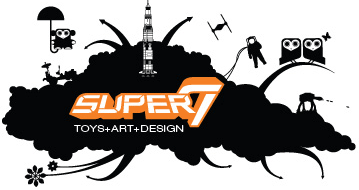 |
"Unsung
Heroes, The History of the Micronauts" |
|
Toy lines may come and go. But few revolutionize the entire toy industry, become best-selling behemoths, and then fade into relative obscurity. The Micronauts, however, did just that in the late 1970s. A repurposing of the Microman Japanese toy line, the Micronauts hold an odd distinction; they were the very first 3 3/4-inch action figures introduced to the American market. That's right. In 1977, before 3 ¾-inch Star Wars and G.I. Joe figures, the Micronauts were the top-selling toy in America. (Emperor Palpatine and Cobra Commander, eat your hearts out.) Today, while there are a number of hardcore Micronauts enthusiasts, and the toys are extremely collectible, the Micronauts are little more than a nostalgic memory in the hearts of the majority of kids who grew up in the '70s. Without major TV or movie tie-ins to sustain long-term public interest, the Micronauts rise to fame was quite supernova-like. Originally released by the Mego Corporation, the Micronauts' meteoric rise can mostly be attributed to one man: Marty Abrams. Abrams held the post of president of Mego during the '70s, leading the company to great success through brilliant licensing agreements. Under his guidance, Mego struck gold with 6-inch dolls from such series as Planet of the Apes, Star Trek, and Wizard of Oz; all top sellers. Yet, something new, revolutionary and much tinier was on the horizon. |
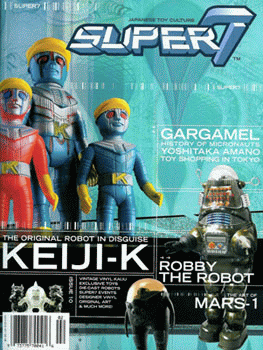 |
|
While
on business trip, Abrams discovered Microman toys by the Japanese company,
Takara. "A friend of mine, Larry Jones, was representing Takara at the
time in California," he recalls. "I went to his office and he had these
Japanese [Microman] toys sitting behind his desk. As I was walking out
the door he said, 'What do you think of these things?' When I looked at
them I got a chill in a way that I was sitting on a potentially huge homerun."
|
|
|
Of course, Abrams' intuition was spot on and Microman was already a huge success in Japan. The toys were ostensibly miniature versions of Takara's popular 12-inch Henshin Cyborg figures. Vehicles, play sets, and an enormous variety of action figures had already flooded Japanese shelves, so when Abrams opted to bring the toys to the US, he had an entire universe of product from which to choose.
Mego renamed the toys Micronauts, and they became an instant hit in America. In fact, the line accounted for almost 1/3 of the company's total sales in 1977. The first assortment of Mego's Micronauts heroes included Time Traveler and the heavy-duty die-cast Space Glider. Seven different vehicles were also released, such as the missile-launching Galactic Cruiser and the wind-up Warp Racer. Battery operated toys, from the Hydro Copter vehicle to two different robots, the 13-inch tall Biotron and his smaller companion Microtron, were a big hit with kids. An enormous play set called the Stratastation rounded out the first series. Asked about the initial appeal of the Micronauts, Abrams is quick to respond. "We combined two great play patterns: action figures and construction/building sets," he says. "If we were able to sustain it past the Star Wars explosion, the Micronauts would have been one of the great toy lines of all time and certainly the greatest action figure line of all time." Even with the amazing pre-existing designs and cool hybrid concept, Mego had to continually evolve the marketing of the line by adding innovative products. For the second series, an astonishing 12 new pieces were introduced. A new hero named Pharoid hit shelves along with an enemy called Acroyear II. Two larger die-cast characters from another Takara toy line were also plucked by Abrams and woven into the Micronauts' offerings. These two characters were the evil Baron Karza and the heroic Force Commander.
Both characters featured magnetic interchangeable parts, which proved to be an extremely popular gimmick. Five new vehicles were also added to the second series: the die-cast New Orbiter, Rhodium Orbiter, and Thorium Orbiter, the all-plastic Aquatron (made for the bathtub) and the vastly intricate Battle Cruiser. Combining 70 different pieces, the Battle Cruiser is easily the most complex Micronaut toy. This time around, the manufacturing of the Micronauts was actually handled by Takara. Abrams notes, "Once [Takara] established the manufacturing side…since they already had the tools, we would let them build small amounts of product. We would take the most successful product, ship them out of Hong Kong, and then duplicate the tooling." |
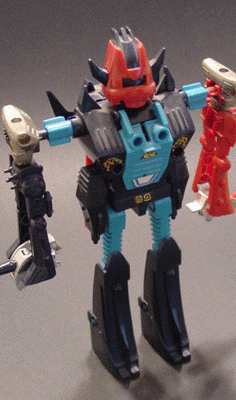 |
It
was around this time that, other US companies started to see Micronauts
as a major money maker. Marvel Comics created a Micronauts comic book
series that garnered decent sales. Seemingly random licensors also climbed
aboard to create some of the oddest Micronauts collectibles ever produced-from
the bubble-blowing robot "Bubbeltron" to Milton Bradley's board game.
However, Mego remained the major force in Micronauts merchandise, though
they were subtly tweaking their formula with the release of each new series.
The third line was Phobos and Nemesis, evil robot variations on Biotron
and Microtron respectively, were added. Interestingly, a trio of comedic
acrobat robots called the Trons were also released. Named Alpha, Beta
and Gammatron, the Trons were culled together from a mishmash of left
over accessory parts and the Stratastation car body. A more interesting
4-in-1 "exploration" vehicle, the Star Searcher, was also included in
this third wave. Lastly, enormous city play sets were brought to the mix.
These cool environments included the Galactic Command Center, Interplanetary
Headquarters, Microrail City, and Satellite Survey Station.
|
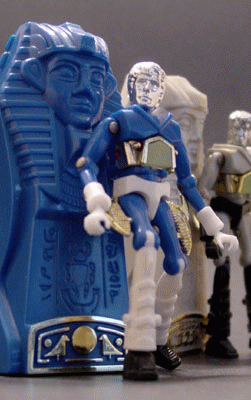 |
|
By
1979, Mego launched its 4th wave of toys, marking the first original Micronauts
figures produced-the Aliens series. "We wanted to start taking the brand
in different directions," explained Abrams. Larry Jones and Cal R&D were
brought in to help Mego develop some of the most unique Micronauts designs
to date. Each Micronauts Alien character featured a glow-in-the-dark brain
and removable and weapon, and soon the Aliens became very popular with
both America and Japanese Micronaut collectors. Repto, Antron and Membros
were part of the first wave of Aliens with the rare Centaurus, Lobros,
and Kronos released in the second wave.
|
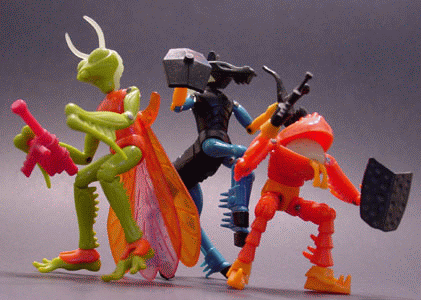 |
In another revolutionary marketing move, Abrams decided that the new figures required new packaging. Mego decided to tap into the talents of renowned master painter, Ken Kelly. "I got a call form a guy named John McNet, who was marketing director [for Mego] at the time," says Kelly. He continues, "They were prepared to launch this new project, and he had seen some of my work, liked it, and wanted me to…The way he stated it was…'Make our 4-inch-high products look like it's 30-feet tall.'" Ken had just finished the cover art for Kiss' Destroyer album and he accepted the Micronauts assignment. His eye-popping paintings combined with the new ultra cool figures proved to be yet another hit. However, not every Micronauts toy was as brilliantly realized as the Aliens. Take for example, the poorly functioning Rocket Tubes play set. Produced in three different variations (the "regular", the "deluxe" and the "Zing Wing" set) this Logan's Run knock off looked good on paper, but was just to bulky and unappealing for most consumers. |
|
As
the Star Wars craze took over in America, Mego was starting to wind down.
Some of their last releases included the Mega City building and a Montgomery
Ward's exclusive Galactic Cruiser, simply renamed Space Vehicle. Cast
in blue instead of green, the Space Vehicle came packaged in a small cardboard
mailing box with figure included. Somewhere along the line too, the Time
Traveler was re-released in four opaque color schemes, rounding out the
series. Meanwhile, American kids had gone bonkers for toys based on Luke,
Leia and Han, all but forgetting the 3 ¾-inch line that kick started the
new trend in toys. But was this really the end for the Micronauts? Was
there life for the line after Mego? You know the cliché: just as one door
closes, another one opens…
|